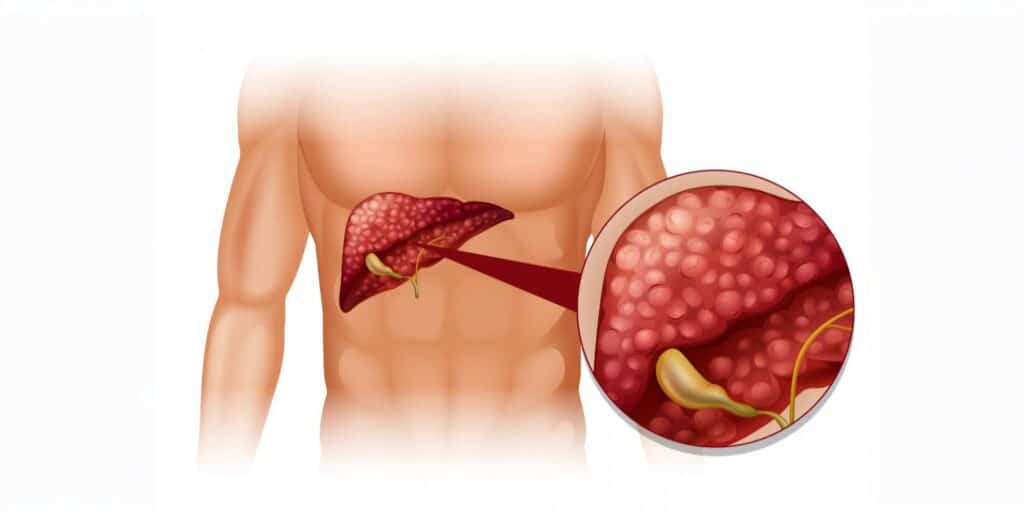Latest
Hepatitis? No. Jaundice? No! The Liver Doc shares how a unique case was diagnosed to be no ‘disease’ at all
Rest, hydration, and nutrition helped normalize the patient’s liver enzyme levels
Author
Author
- admin / 1 day

- 0
- 5 min read

This World Liver Day, we are revisiting an interesting case shared earlier this year by Dr Cyriac Abby Philips, popularly knows as “The Liver Doc,” which highlights a crucial misunderstanding about liver function tests that could save many from unnecessary worry—rigorous exercise could result in elevated liver function test counts.
The case involves a young man from the UK who received alarming liver function test results during his vacation. His aspartate aminotransferase (AST) levels were around 450, more than ten times the normal range, while his alanine aminotransferase (ALT) was about 200, roughly four times higher than normal— an indication of hepatitis.
“The moment they identified this abnormal liver function, they actually visited a physician who sent him for a lot of tests and gave him some medications as part of liver protection or liver supplements, but then the enzymes were actually going higher and higher,” Dr Philips says, in the video.
What appeared to be a concerning case of hepatitis turned out to be something entirely different. The key lay in understanding that AST, commonly associated with liver health, isn’t exclusive to liver function. “If it was liver-related injury, it had to be the ALT that has to be high, not the AST,” Dr Philips explained, highlighting a crucial distinction in interpreting these test results.\

The patient’s history revealed he had recently begun an intensive exercise regimen. “He was very very rigorously working out since last 3 weeks including something known as HIIT [High Intensity Training] where they do circuit training, a bunch of very difficult to perform exercises, aerobic exercises done in very short periods in bursts activities and weight training along with that,” Dr Philips shared, explaining that such activities could cause muscle injury, which leads to elevated AST counts.
“The reason for his AST being high turned out to be because of muscle injury. Most important aspect is do not test your liver functions the day after you exercise rigorously. If you have a high intensity period of exercise and then the next day you look at your liver functions, it will be abnormal,” he said.
Single liver tests cannot be “the basis for any diagnosis
First Check spoke with Dr Anil K Arora, a gastroenterologist and Hepatologist at Sir Ganga Ram Hospital to understand more about AST and how such cases are misdiagnosed. He concurred that AST levels could be elevated because of muscle injury.
“AST or more commonly known as SGOT test— if you go for a blood checkup, that’s what it is called. Now, AST can also be high due to other tissues in the body, such as if the person has kidney disease or heart disease or even muscle injury, this can lead to a high AST level,” he said.
Dr Arora said that single liver tests cannot be “the basis for any diagnosis.” “What we call a thorough clinical workup is crucial before reach a conclusion and then lead to treatment about disease or condition,” he added.
“This particular case that you mentioned, it actually brilliantly illustrates the importance of temporal association – understanding what changed in the patient’s life just before the symptoms appeared,” Dr Arora pointed out. “Was it a new medication? A change in lifestyle? Recent travel? These questions are fundamental to accurate diagnosis.”
Dr Arora said that with increased access to test results, patients tend to self diagnose after consulting the internet, and highlighted the dangers of “false decision making,” and “self-medication.”
“It’s crucial for doctors to take time to explain that abnormal results don’t always indicate disease. Sometimes they reflect normal physiological responses to lifestyle changes,” he said.
“The liver is complex – it’s not just about the numbers we see on tests. Context is everything. A good clinician should always ask: What’s the patient’s complete story?” Dr Arora said.
In the case shared by Dr Philips, the resolution was remarkably simple; after a week of rest, good nutrition, proper hydration, and no medications, the patient’s AST levels returned to normal, dropping to 88, while ALT fell to 34.
“This was about a week back and I asked him to completely rest, have good food and take ample amount of water and then repeat the test after a week and interestingly, I mean I was expecting it but for them it was like magic, his liver function tests were completely normalized,” Dr Philips concluded in his video.
This understanding is particularly relevant in today’s fitness-focused society, where intense workout regimens like HIIT and strength training are increasingly popular. As more people engage in strenuous exercise, awareness of its effects on medical test results becomes crucial for both healthcare providers and patients.
Also read: The silent epidemic: Non-Alcoholic Fatty Liver Disease on the rise in India – First Check
(Do you have a health-related claim that you would like us to fact-check? Send it to us, and we will fact-check it for you! You can send it on WhatsApp at +91-9311223141, mail us at hello@firstcheck.in, or click here to submit it online)










